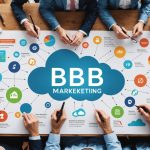Overview of the UK Regulatory Framework
Understanding the UK product safety regulations is crucial for skincare brands aiming to comply with legal requirements. A key piece of legislation is the UK Cosmetic Products Regulation, which ensures that all products are safe for use and comply with detailed ingredient labelling. This regulation helps protect consumers by ensuring products do not contain hazardous substances and are properly labelled.
Regulatory bodies, such as the Office for Product Safety and Standards (OPSS), play pivotal roles in overseeing compliance. They offer guidance and enforce compliance, ensuring that all products in the market adhere to the set legal standards.
For the organic skincare sector, compliance involves additional scrutiny. Products must meet the legal requirements for organic claims, including certification by recognized bodies. This ensures the authenticity and integrity of organic labels, building consumer trust.
Failing to comply with these regulations can lead to severe consequences, including product recalls and reputational damage. Hence, skincare brands must be well-versed in the regulatory landscape to ensure all their products are compliant and safe for consumer use. Understanding these implications can significantly affect a brand’s market presence and consumer confidence.
Pre-Market Safety Assessment
Safety assessments are essential before a product reaches the market. These assessments typically involve a detailed risk evaluation. The main goal is to identify potential hazards associated with product use, ensuring consumer safety and regulatory compliance.
Steps to conduct a comprehensive safety assessment start with gathering data on all ingredients. Each component’s hazard profile is examined, assessing risks and toxicity levels. This information is crucial for determining any adverse effects a product might have on users.
Further considerations in ingredient safety include understanding acceptable usage levels. Ingredients safe for one application might pose risks if concentrations exceed recommended levels. Manufacturers must also anticipate possible consumer allergies or sensitivities, necessitating clear labelling and possible product reformulation.
Maintaining a robust product formulation record is crucial. This documentation acts not only as a legal requirement but also a safeguard, ensuring transparency. Records should detail formulas, ingredient sources, and safety testing outcomes. This information is invaluable should a safety issue arise post-market launch, enabling swift action to address concerns and maintain consumer trust.
By prioritising these areas, companies can produce safe and reliable products, bolstering consumer confidence and loyalty.
Labeling and Packaging Requirements
Product labeling standards are crucial in ensuring that consumers receive accurate and necessary information about the products they purchase. Essential information required on product labels typically includes the product’s name, its ingredients, origin, usage instructions, and expiration date. This fundamental data aids consumers in making informed decisions and understanding the product’s value and safety.
For packaging compliance, manufacturers must follow guidelines that promote environmentally-friendly packaging. This might involve using recyclable or biodegradable materials, minimizing excess packaging, and clearly indicating disposal instructions. These steps not only support environmental sustainability but also enhance brand trust and appeal to eco-conscious consumers.
A significant aspect of consumer information is its clarity and accuracy. Labels must provide information in a way that is easy for consumers to understand, avoiding technical jargon that could mislead or confuse. Clear labeling also helps in building customer loyalty, as it demonstrates a company’s commitment to transparency and customer service.
In sum, adhering to both labeling and packaging guidelines is not only a regulatory requirement but also a strategic move to promote consumer trust and sustainability.
Testing Protocols for Skincare Products
When it comes to ensuring the safety and effectiveness of skincare products, product testing is paramount. The procedures involved in this can be complex, with microbiological testing and stability testing playing critical roles.
Microbiological testing ensures that skincare products are free from harmful bacteria and other microorganisms. It helps in identifying potential contaminants that could cause adverse effects on the skin. Skincare manufacturers must ensure their products pass this test to confirm safety for consumer use. Common methods include microbial enumeration tests and preservative efficacy tests, aimed at maintaining product integrity throughout its shelf-life.
Stability testing is another crucial process. This procedure examines how a product performs over time under various environmental conditions, such as temperature and humidity. The aim is to ascertain product stability and establish its shelf-life. Stability testing protocols require monitoring of physical, chemical, and microbiological aspects to ensure consistent product quality.
Both microbiological and stability testing are indispensable in safeguarding consumer health and verifying that products remain safe and effective from production to end-use. These protocols underpin the reliability of skincare products available in the market.
Claims and Marketing Communications
Understanding the legal implications of marketing claims is essential for businesses in the organic skincare sector. Companies must adhere to advertising regulations, ensuring claims are not misleading. Misrepresentation can lead to legal consequences, making it important to follow standards for truthful marketing.
Standards for truthful advertising require that all promotional content be clear and honest, reflecting the product’s actual benefits and ingredients. This prevents consumers from being deceived and avoids penalties or legal action.
To substantiate claims effectively, businesses should focus on scientific backing and evidence. This can involve conducting rigorous testing and collecting data that supports the advertised benefits of their products. By gathering robust evidence, companies can confidently communicate their claims without the risk of misleading consumers.
Additionally, guidance from regulatory bodies can aid in navigating the complexities of claims substantiation. These guidelines ensure that claims are both compliant and persuasive, crucial for maintaining consumer trust and brand integrity. By upholding these principles, organic skincare brands can build credible and compelling marketing communications that appeal to informed consumers.
Official Resources and Best Practices
Navigating the landscape of skincare safety and regulations can seem daunting, but there are invaluable regulatory resources to guide you. The first step for any brand should be referring to the Cosmetic Product Safety Reports provided by recognized authorities. These reports are a cornerstone for ensuring that your products adhere to stringent safety standards.
To streamline the process, adopting compliance checklists is crucial. These checklists, often available from leading regulatory bodies, enumerate the essential steps and documentation required, from ingredient sourcing to formulation details. A well-curated checklist ensures that no regulatory stone is left unturned, providing both structure and assurance.
Observing industry best practices gives additional layers of credibility and excellence to skincare brands. Successful organic brands, such as those that consistently earn eco-certifications, tend to excel by embracing transparency in ingredient listings and sourcing from sustainable resources.
Incorporating these practices, aligned with official regulations, not only enhances product integrity but also builds consumer trust. Keeping abreast of evolving guidelines and learning from those at the forefront of the industry can set your brand on a path to success while maintaining compliance and safety.
Overview of Regulatory Landscape for Organic Skincare Brands
In the UK, organic skincare brands must navigate a detailed regulatory framework to ensure compliance with organic skincare legislation. The key regulations define standards that products need to meet to be marketed as organic. It’s essential for brands to understand these UK legislations to guarantee product safety and consumer trust.
The Cosmetic Products Enforcement Regulations 2013 is one such regulation that ensures products are safe for consumer use. Intricately linked with this is the requirement for Good Manufacturing Practices (GMP), which serve to assure the quality and safety of cosmetic products.
Various regulatory bodies oversee these proceedings. The UK’s Office for Product Safety and Standards (OPSS) plays a pivotal role in enforcing compliance and providing guidance to brands. Additionally, Soil Association and COSMOS provide certification for organic products, ensuring brands meet strict organic criteria.
Understanding this landscape helps brands align their production methods with these laws, guaranteeing their products are safe, compliant, and authentic in their organic claims.
Essential Steps for Compliance
Understanding the essential steps for compliance involves addressing various facets of safety assessments and product safety. Companies must ensure that their products meet all regulatory standards to protect consumers and maintain brand integrity.
Conducting Safety Assessments
One of the first steps in compliance is conducting thorough safety assessments. This involves evaluating potential hazards associated with a product. These assessments should answer the question: “Is this product safe for consumer use?” They require a comprehensive analysis of the product’s ingredients and how they interact under normal usage conditions.
Ensuring Ingredient Safety
Ensuring ingredient safety is critical to compliance. Businesses must scrutinise every ingredient for potential risks. Best practices for assessing safety include reviewing scientific literature and toxicological data. A product’s compliance hinges on understanding ingredient safety profiles, including possible allergens and irritants, to preemptively address consumer queries.
Risk Management Strategies
Effective risk management strategies are a cornerstone of maintaining product safety. This encompasses both pre-market and post-market evaluations, ensuring constant vigilance. Risk management isn’t a one-time task but requires continuous monitoring and evaluation of safety data sheets and ongoing scientific research, thus safeguarding compliance consistently.
Labeling Requirements for Organic Skincare Products
Understanding labeling regulations is crucial for ensuring compliance and building trust with consumers. Skincare products must adhere to specific mandatory labeling elements. These typically include the product’s name, list of ingredients, and manufacturer’s details. Also vital is the net quantity and instructions for use, guaranteeing transparency.
When it comes to product claims, communicating organic claims authentically is essential. Manufacturers should ensure that these claims are supported by tangible evidence, such as organic certification from recognized bodies. This certification verifies that the product meets predefined organic standards, offering consumers confidence in its authenticity.
To enhance transparency and maintain consumer trust, companies should follow best practices for labeling. For example:
- Clearly distinguish between organic and non-organic ingredients.
- Avoid ambiguous language that could mislead consumers.
It’s also important to be honest about the product’s organic content percentage. Staying up to date with labeling laws will help companies avoid potential legal pitfalls. This means regularly reviewing regulations and making necessary adjustments to product packaging. By maintaining these practices, businesses not only comply with legal standards but also build loyal customer bases.
Best Practices for Maintaining Compliance
Navigating the world of compliance can be overwhelming, but adhering to compliance best practices ensures organisations stay on track. Clear policies not only promote trust but also prevent costly mistakes. Let’s delve into these best practices:
Quality Control Processes
Implementing robust quality control processes is essential in maintaining compliance. Such processes help identify errors before they escalate. This entails routinely checking systems and procedures and ensuring they align with regulatory standards. By integrating these checks into daily operations, businesses can assure consistency and uphold quality assurance.
Staff Training and Education
Training staff is another cornerstone of compliance best practices. Well-informed employees are better equipped to follow procedures and report discrepancies. Regular educational sessions should be held to update staff on new regulations and company policies. This investment in training and education fosters a culture of compliance and accountability.
Keeping Accurate Records
Documentation is central to demonstrating compliance efforts. Accurate records support transparency and can be invaluable during audits. Ensure that records are updated promptly, stored securely, and easily retrievable. Proper documentation not only protects the organisation but also reinforces trust with stakeholders. Maintaining detailed records helps in affirming the company’s integrity and dedication to compliance standards.
Case Studies of Successful Compliance
In the competitive world of UK organic skincare, certain brands have triumphed in regulatory compliance, exemplifying a standard of excellence. For instance, brand X’s journey demonstrates the importance of adhering to industry guidelines. Their success story highlights how strict compliance with organic certifications and transparency in product labeling can build consumer trust and foster brand loyalty.
Similarly, brand Y’s approach, often cited in industry examples, underscores the value of investing in sustainable packaging and ethical sourcing. This brand’s commitment not only ensures legal compliance but also strengthens its market position by appealing to environmentally conscious consumers.
These stories serve as a powerful inspiration for budding skincare entrepreneurs. Learning from case studies, as posted by regulatory bodies, aspiring brands can gain crucial insights. A common lesson is the necessity of understanding and integrating compliance measures from the outset to avoid costly revisions later.
Additionally, these success stories demonstrate that compliance is not merely a legal obligation but a strategic tool. By incorporating these practices, new businesses can position themselves as responsible and trustworthy, potentially leading to greater success in a crowded marketplace.
Resources for Further Reading and Support
Gaining a deeper understanding of regulatory resources can be challenging. Fortunately, there are various resources and support organizations available to aid you.
Links to Regulatory Authorities
Connecting with regulatory authorities through their official websites ensures access to the latest guidelines and compliance requirements. These platforms often offer insights into industry-specific regulations, helping you stay informed.
Industry Associations and Networks
Joining industry associations and networks can provide a wealth of information and support. These organizations often conduct seminars and workshops that focus on current trends and changes in regulations. They serve as excellent platforms for networking and sharing experiences with peers.
Online Compliance Tools and Forums
Embrace the use of online compliance tools and forums. These digital platforms are designed to help understand and adhere to regulations continuously. Tools offer real-time updates on policy changes, while forums allow for discussions with professionals facing similar challenges.
Leveraging these resources can significantly enhance your ability to navigate complex regulatory landscapes effectively. Staying informed and connected is key to ensuring compliance and fostering professional growth within your sector.











